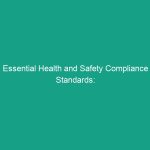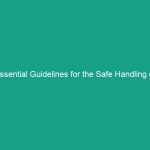Introduction
Good morning team! Today, we are going to discuss a crucial aspect of our daily operations: Essential Daily Safety Huddles. These quick meetings at the start of each shift aren’t just a formality; they are a vital part of our commitment to Safety and well-being at work. By taking just a few moments to gather and discuss safety, we can significantly reduce risks, prevent accidents, and foster a culture of caring for one another.
Understanding Essential Daily Safety Huddles
So, what exactly are essential daily safety huddles? These are brief, focused meetings held at the beginning of each work shift where team members come together to discuss safety protocols, identify potential Hazards, and share important updates. The primary goal is to ensure that everyone is on the same page regarding Safety Measures and to reinforce the importance of vigilance during the workday.
Beyond just a routine, these huddles provide an opportunity for open communication and can greatly impact our daily operations. It’s essential to understand that safety is not just a checklist item; it’s a shared responsibility that requires everyone’s participation. One common misconception is that safety huddles are only necessary when new tasks or equipment are introduced. In reality, they should occur daily to keep safety top of mind.
Key Hazards, Risks, and Safety Considerations
In our workplace, certain hazards are always present, regardless of the specific tasks at hand. Here are some key risks we should consider during our safety huddles:
- Slips, Trips, and Falls: One of the most common workplace injuries, often caused by wet floors, poor lighting, or cluttered walkways.
- Equipment Safety: Improper handling or lack of Maintenance can lead to equipment failures and accidents.
- Hazardous Materials: Exposure to chemicals or other harmful substances can pose serious health risks.
- Ergonomic Risks: Poor posture or repetitive strain can lead to long-term injuries.
Ignoring these hazards can lead to severe consequences, including injuries, decreased productivity, and even legal liabilities for our organization. By addressing these risks in our daily safety huddles, we can proactively work to mitigate them.
Best Practices, Procedures, & Actionable Advice
To make our safety huddles effective, here are some Best Practices and actionable steps we can implement:
- Set a Regular Schedule: Huddles should occur at the same time every day to establish a routine. Aim for the start of each shift.
- Encourage Participation: Everyone should have the opportunity to speak. Encourage team members to share their observations about safety conditions or near-misses they have experienced.
- Focus on Specific Topics: Each huddle can address a different topic. For example, one day might focus on Ladder Safety, while another could cover proper lifting techniques.
- Keep It Brief: Aim for 10-15 minutes. This ensures that the meeting is concise and respectful of everyone’s time.
- Document Discussions: Take notes on what was discussed, particularly any concerns raised, and follow up on these in future huddles.
One effective approach is to share a brief case study or real-world incident at each huddle. For instance, discussing how a slip on a wet floor led to an injury can help emphasize the importance of keeping walkways clear. Use these examples to drive home the safety message and engage your team.
Regulations, Standards, and Compliance
Compliance with safety Regulations is not just a legal obligation; it’s essential for our well-being. Organizations like OSHA (Occupational Safety and Health Administration) provide guidelines that must be followed to ensure a safe working Environment. Regular safety huddles help reinforce these Standards by keeping them fresh in everyone’s minds.
For example, osha mandates that employers provide a workplace free from recognized hazards. By discussing safety protocols and potential risks at our daily huddles, we actively participate in ensuring compliance and enhancing our Workplace Safety culture.
Employee Engagement & Discussion
Now, let’s take a moment for some discussion. I want to hear from you: What safety challenges have you encountered related to our daily routines? Are there any specific areas where you feel we can improve our safety practices? Your insights are invaluable and can help us create a safer work environment for everyone.
Conclusion & Key Takeaways
As we wrap up today’s Toolbox Talk, remember that essential daily safety huddles are a critical part of our safety culture. They help us stay informed, engaged, and proactive about our safety practices. By addressing risks and sharing knowledge, we can create a safer workplace for ourselves and our colleagues.
Let’s all commit to making safety a priority every day, not just during huddles. Thank you for your attention and dedication to maintaining a safe work environment. Together, we can ensure that we all go home safe and sound at the end of each shift.


